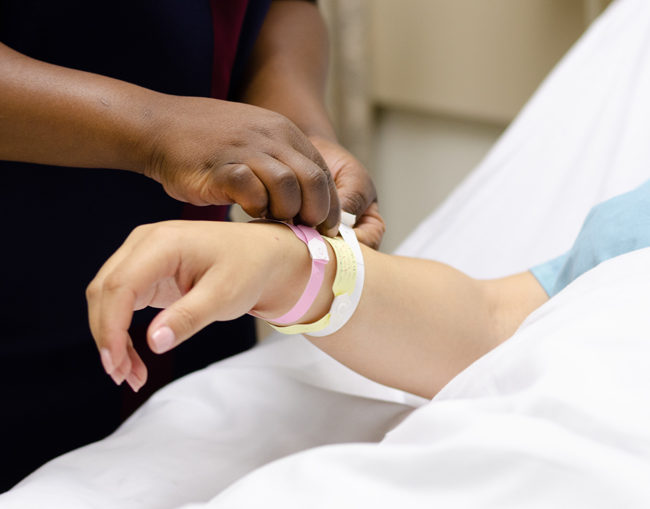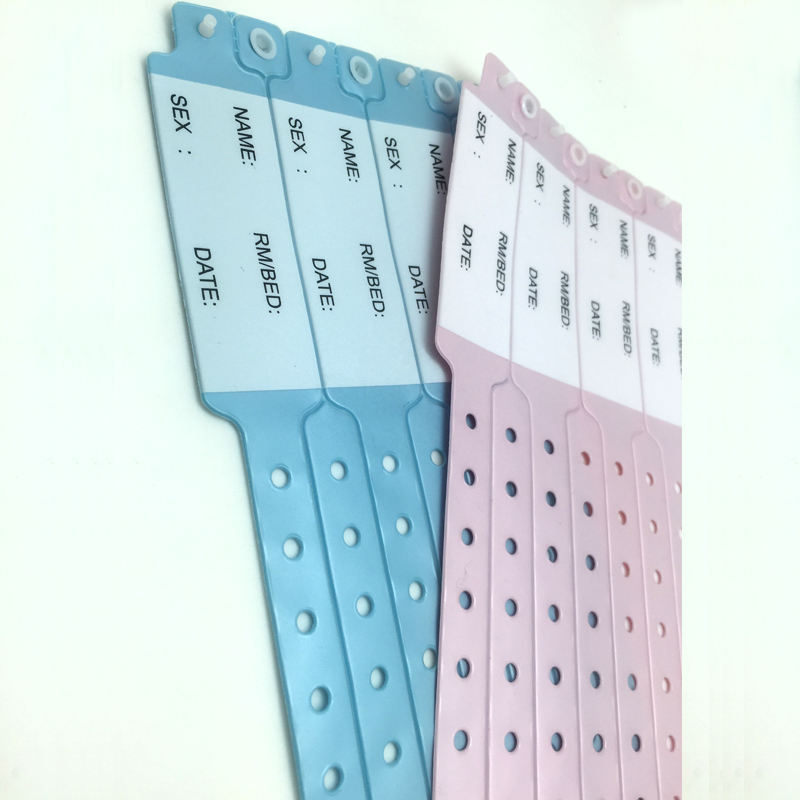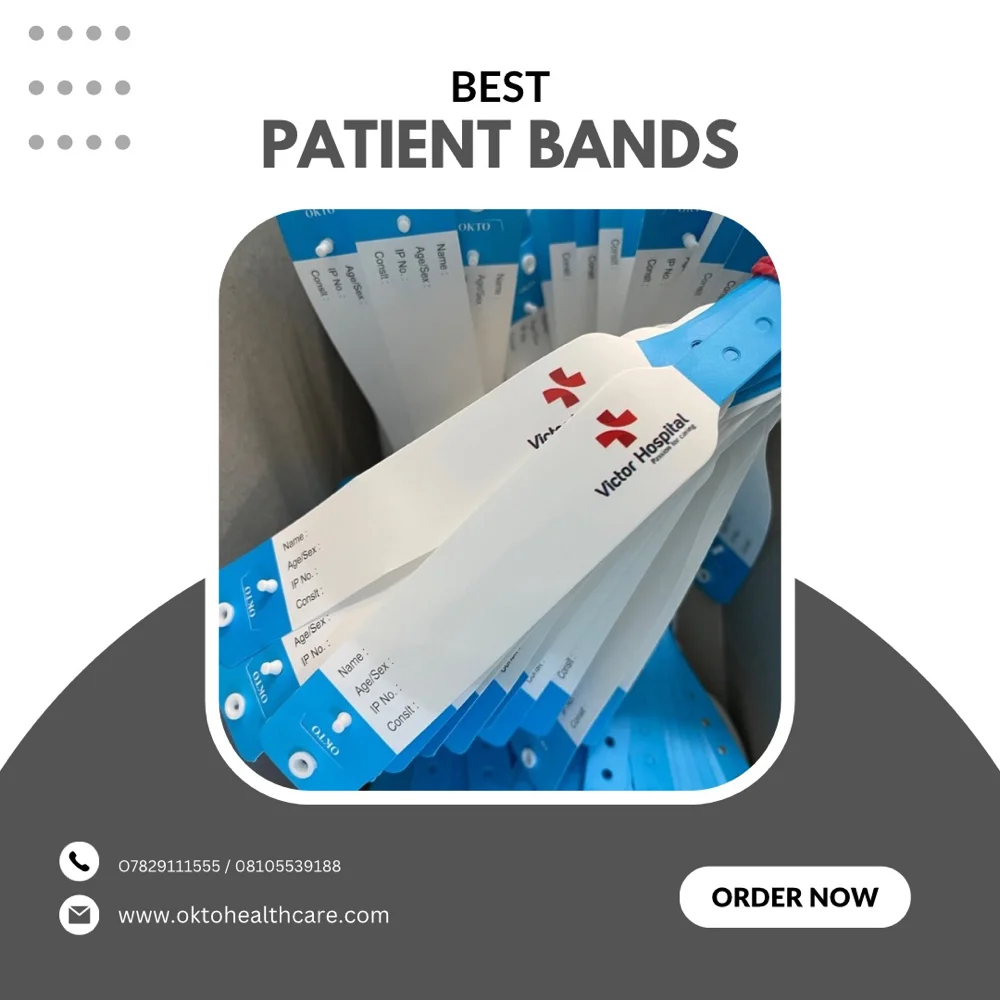The Benefits of Using a Patient Identification Band in Emergency Situations
The Benefits of Using a Patient Identification Band in Emergency Situations
Blog Article
Client Recognition Bands: A Secret Device for Improved Medical Precision
Client recognition bands represent a critical part in the pursuit of clinical precision and individual safety and security within health care atmospheres. The true extent of their effect on client outcomes and general healthcare top quality warrants better evaluation.

Importance of Individual Recognition
Client recognition is an essential element of health care that ensures the safety and accuracy of medical treatment. Proper identification protocols are necessary to avoid medical mistakes, which can cause negative person outcomes, including incorrect drug administration, misdiagnosis, or unsuitable therapy plans. The relevance of precise person recognition can not be overstated, as it functions as the structure for efficient communication amongst doctor.
In environments where multiple clients are receiving treatment all at once, the threat of identification confusion increases. Carrying out durable identification systems aids mitigate these risks and enhances patient safety. Patient Identification Band. Exact recognition adds to the stability of medical documents, making sure that person backgrounds, allergies, and previous treatments are correctly connected to the right person.
Furthermore, compliance with regulatory standards and certification needs often mandates rigid patient identification methods, fostering a society of responsibility and quality treatment. Eventually, the value of patient recognition goes beyond simple administrative tasks; it is a fundamental element of supplying high-quality health care that focuses on patient safety and enhances clinical outcomes. Purchasing efficient recognition practices is not simply useful-- it's critical in today's complicated health care landscape.
Sorts Of Individual Recognition Bands
In healthcare setups, different kinds of patient identification bands are utilized to guarantee exact recognition and enhance safety. These bands work as an essential device in stopping medical mistakes associated with client misidentification.
One of the most common kind is the typical wristband, usually made of sturdy plastic and printed with the client's name, date of birth, and a special identification number. These wristbands are often color-coded to convey certain information, such as allergies or other medical conditions.
Another kind is the barcode wristband, which includes a scannable barcode linked to the individual's digital health and wellness document. This modern technology enables reliable data retrieval and verification during medicine administration and other medical procedures.
Furthermore, RFID (Superhigh Frequency Recognition) bands are becoming increasingly preferred. These bands can connect wirelessly with hospital systems, permitting real-time tracking and identification of individuals, thereby improving and streamlining workflows individual security.

Advantages for Health Care Carriers
Making use of individual recognition bands offers substantial benefits for doctor, boosting both functional efficiency and individual safety. These bands offer as a vital tool in streamlining person monitoring processes (Patient Identification Band). By making sure precise recognition, doctor can reduce the threat of management errors, such as mislabeling samples or misdirecting therapies, which can result in pricey hold-ups and problems
Additionally, individual recognition bands facilitate seamless interaction among the health care group. With standard and easily available person details, suppliers can make informed decisions rapidly, boosting general workflow. This performance is specifically vital in high-pressure atmospheres such as emergency situation departments, where time-sensitive interventions are crucial.
The application of identification bands also supports compliance with governing criteria and best practices, consequently decreasing the risk of lawful consequences originating from recognition mistakes. The usage of these bands improves information precision in electronic health records, leading to much better treatment coordination and connection.
Effect on Patient Safety And Security
Precise patient identification is a keystone of medical care security, dramatically decreasing the possibility of errors that can compromise patient well-being. Using client recognition bands is vital in making sure that each patient receives the correct therapy, drugs, and treatments. These bands work as a dependable recommendation factor for medical care experts, reducing the danger of misidentification, which can cause severe repercussions such as inaccurate medication management or medical mistakes.
The implementation of standardized person recognition bands adds to a society of safety and security within health care setups. By supplying clear, conveniently readable information, these bands aid to enhance the value of validating patient identification at every stage of care. Furthermore, they promote interaction among team member, making sure that every person entailed in an individual's care is conscious of their particular needs and requirements.
Furthermore, using client identification bands can improve the accuracy of digital health documents, even more decreasing the potential for mistakes - Patient Identification Band. By focusing on individual safety and security with reliable identification techniques, healthcare suppliers can foster trust and confidence amongst clients, inevitably resulting in better scientific end results and improved person satisfaction. The effect of proper person identification can not be overemphasized; it is an essential aspect of top quality health care shipment
Ideal Practices for Execution
Reliable application of patient recognition bands is crucial for enhancing person safety and security and minimizing errors in health care setups. To attain this, health care organizations must adopt several ideal methods. First, team training is necessary; all group participants must comprehend the importance of accurate individual identification and the read what he said procedures for band application. Normal training sessions and refresher programs can make certain continuous compliance.
2nd, the design of the recognition bands must prioritize exposure see this here and toughness. Bands must be easy to read, consist of vital patient info, and withstand day-to-day wear. Using color-coding can better boost quick recognition.


Third, integrating electronic health and wellness records (EHR) with recognition band systems can improve operations. Automated informs for disparities in patient identification can stop prospective errors prior to they occur.
Lastly, performing normal audits and comments sessions will certainly help identify areas for enhancement. Engaging team in these discussions cultivates a society of safety and liability.
Final Thought
In verdict, person identification bands play an essential function in improving medical precision and making sure individual safety within medical care systems. Adopting finest practices for implementation promotes a culture of safety and security, ultimately leading to improved person results and higher depend on in medical care services.
Individual recognition bands represent an important element in the quest of medical accuracy and patient safety and security within medical care settings.Using individual identification bands offers substantial advantages for healthcare carriers, boosting both operational effectiveness and individual safety and security. By focusing on individual safety through efficient identification methods, healthcare service providers can foster trust fund and confidence among clients, inevitably leading to much better scientific outcomes and improved patient fulfillment.Reliable implementation of patient recognition bands is critical for boosting client security and decreasing mistakes in medical his response care settings.In final thought, person identification bands play an essential role in enhancing clinical accuracy and guaranteeing individual safety within healthcare systems.
Report this page